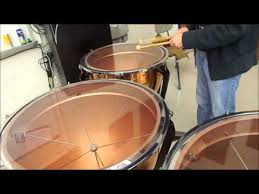![]()
Mystery Function Of Ancient Bowls Solved? By Ted Twietmeyer
|
Abu Garab is a remote place in Egypt well off the beaten tourist path. Nine massive bowl-like structures made from a block of solid stone are located there. Some have theorized that these were used to hold sacrificial blood from bulls. But there is a more realistic use for these objects.
Considerable degradation of fine detail has occurred over thousands of years. It is thought this site dates back about 10,000 years. Despite the age of this site these objects were formed from stone with reasonable degree of precision. Archeologists moved these bowls to this location some years ago from another ancient pyramid site. They were supposed to be moved to a museum but that never happened. Perhaps some of the damage seen is not just from thousands of years, but is the result of cables, chains or straps used to pick up and move these objects.
While there are other solid instances of core drills used at this site and at other places in ancient Egypt, I do not believe this hole was made by a tube drill. Why? Tube drills usually make a perfectly round hole at both entry and exit locations. It is true that hole edges at entry and exit points from a tube drill can be unintentionally larger than the tube drill itself caused by chipping from drill teeth, but not smaller. Yellow lines added by author show a straight, protruding ridge running down the inside of the hole. This is not possible with a tube drill. Something other than a tube drill must have been used to make this hole; perhaps some type of laser-like energy beam we know nothing about. Such a beam could easily make this irregularity. This internal ridge may be showing us the starting and ending points of the “drilling” operation. So what are these nine bowls used for? These were built to be used as large drums.
Drum tone in today's drums, just as in ancient times, is controlled by two main factors:
Ancient musicians not only had the ability to control drum head tension with their stone bowl design, but could change drum tone by sliding a stone, wood or metal plug in and out of the side hole (Fig. 4.) Sliding a plug in and out of this hole slightly changes the total internal air volume of the drum, providing extremely fine tuning of drum tone to a exact frequency. We already know that various pyramids and obelisks resonate with certain frequencies. Very fine tuning may be required for these drums to stimulate these structures into resonance. Archeologists have missed the boat on this one these nine drums were carelessly left out in the desert. These objects are priceless - perhaps the last of the oldest known drums in human history. Ted Twietmeyer Figures 1 5: https://www.youtube.com/watch?v=8aZtLXvuCHc Figure 6: Google images
|
| Donate
to Rense.com
Support Free And Honest
Journalism At Rense.com |
Subscribe
To RenseRadio!
Enormous Online Archives,
MP3s, Streaming Audio Files,
Highest Quality Live Programs |
<





